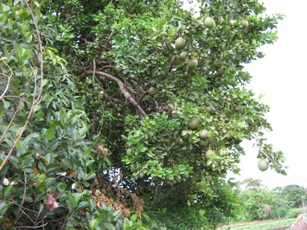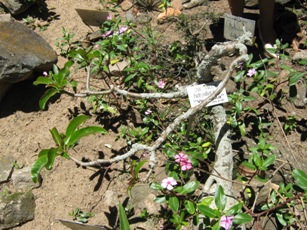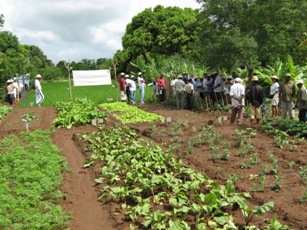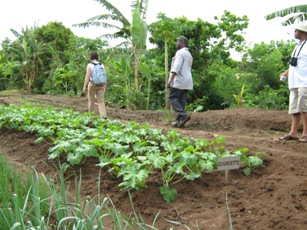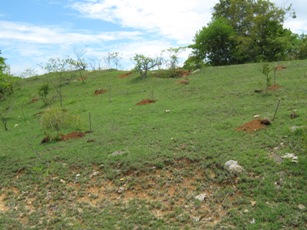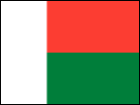
Madagascar National Plant Genetic Resources Centre

Background
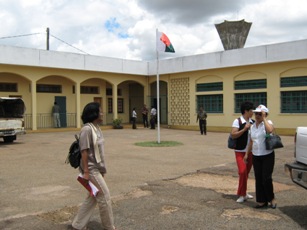
Madagascar with its varied agro-climatic zone has a great variety of food crops and plant genetic resources (PGR). Rice is the staple food and is cultivated by up 80% of the farmers. Madagascar is the second largest rice producer in Africa. Some of the other most important crops cultivated are cassava, maize and beans (Phaseolus). Vanilla and coffee are the main cash crops with vanilla as the country's primary source for foreign currency. Madagascar has also an important diversity of coffee. More than 50 wild coffee species, belonging to the
Mascaro coffea are endemic to the island.
The main crops for which Madagascar has recognised or potential advantages are horticulture, in particular potatoes, carrots, onions, peas, green beans and chicory
Madagascar National Plant Genetic Resources Centre implementation will be in preparation due to its recent integration to the SADC region. Madagascar has been accepted as the 14th member of SADC on August 2005.
Four ministries are involved in PGR issues: the Ministry of agriculture, Livestock and Fisheries, the Ministry of Environment, Forests and Tourism, the Ministry of Economy, Trade and Industry and the Ministry of education through University's Centre. The PGR activities of each department are different from another depending upon their mandate.
In 2007, in order to increase the agricultural production, to improve food crops safety and the farmers income, Malagasy government has launched the green revolution essentially based on utilization of improved seeds. Moreover, a few decades ago, an effective and continual loss of traditional and local varieties was noted in PGR. It is generally caused by the climatic risks and the unfavorable biotic factors, and also by the modern varieties increasing use. Many traditional varieties of rice, coffee, for example have completely disappeared.
Activities and Material
Since 1974, conservation activities and sustainable use of the PGR have been mainly under the aegis of the National Centre for Applied Research on Rural Development or FOFIFA. This Centre is mostly involved with rice germplasm collection.
Technical activities concerning rice, maize, wheat, potatoes, sweet potatoes, cassava, groundnuts, beans, forage species, coffee, vanilla, pepper such as management of the field gene bank, collection, maintenance and monitoring of accessions, regeneration, multiplication, characterization and documentation, generally falls under FOFIFA and FIFAMANOR Research Centre, both attached to the Ministry of Agriculture, Livestock and Fisheries.
Those two institutions collaborate with the International Agricultural Research Centres such as IRRI, CIAT, CIP, CIRAD, CIMMYT, and Bioversity International
In addition, such organisms are in charge of species selection and their development: SNGF for forest species, OFMATA for tobacco crop, HASYMA-DAGRIS for cotton crop, SIRAMA for sugar cane. CTHA and CTHT (Horticultural Technical Centre of Antananarivo and Toamasina) undertake programmes that aim to contribute towards the development of production for export.
In situ conservation
There is neither action plan nor program about PGR in situ conservation in Madagascar. During the last ten years, initiatives in term of inventory and census have been especially carried out by organisms of conservation as KEW, ANGAP, WWF, WCS,...concerning endemic species with medicinal value and industrial potentiality. Nevertheless, collection missions and prospecting reports undertaken by FOFIFA and FIFAMANOR allow inventorying some local varieties of PGRFA in situ in Madagascar.
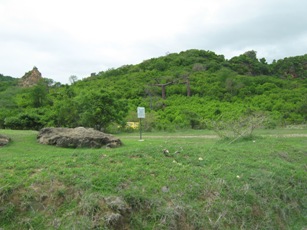
|
Common name
|
Number of local varieties
|
|
Rice
|
1500
|
|
Cassava
|
30
|
|
Maize
|
60
|
|
Sweet potatoes
|
30
|
|
Potatoes
|
25
|
|
Bean
|
50
|
|
Lima bean (Phaseolus lunatus )
|
08
|
|
Bananas
|
10
|
Ex situ conservation
About 95% of the national collection concerning food crops, cash crop and forage are stored by the 2 national research centres. These collections include: local ecotypes, old and recent introductions, new varieties selected from created varieties and 2 species of wild rice: Oryza longistaminata and Oryza punctata. The evolution of the accessions collected from 1996 to 2005 is as following:
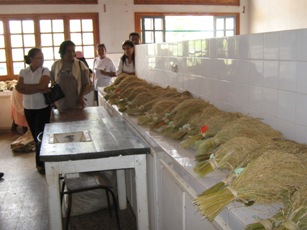 |
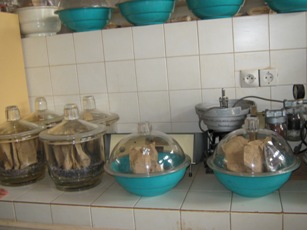 |
Species / Group of species |
Holder Organism
|
Number of accessions of 1996
|
Number of
accessions 2005
|
Main Stations
|
Stations of duplication
|
Observations
|
|
|
Cereal Crops
|
|
|
Rice
|
FOFIFA
|
4127
|
6210
|
Mahitsy
|
|
Increasing of varietal creation
|
|
|
Wheat
|
FOFIFA
|
169
|
|
CALA
|
|
abandoned
|
|
|
FIFAMANOR
|
2570
|
352
|
Antsirabe
|
|
|
|
|
Triticale
|
FIFAMANOR
|
603
|
210
|
Antsirabe
|
|
|
|
|
Avoine
|
FOFIFA
|
15
|
17
|
CALA
|
|
forage
|
|
|
Burley
|
FOFIFA
|
34
|
|
CALA
|
|
abandoned
|
|
|
Maize
|
FOFIFA
|
371
|
325
|
CALA
|
Antananarivo
|
|
|
|
Root crops
|
|
|
Cassava
|
FOFIFA
|
330
|
202
|
CALA
|
Kianjasoa,
Toliara,
Kianjavato
|
|
|
|
Potato
|
FIFAMANOR
|
181
|
194
|
Antsirabe
|
|
|
|
|
Sweet potato
|
FIFAMANOR
|
72
|
91
|
Antsirabe
|
|
|
|
|
Taro
|
FIFAMANOR
|
|
21
|
Antsirabe
|
|
|
|
|
Leguminous Crops
|
|
|
groundnut
|
FOFIFA
|
349
|
275
|
CALA
|
Toliara Kianjasoa
|
|
|
|
bean
|
321
|
222
|
CALA
|
|
|
Vigna
|
135
|
98
|
CALA
|
|
|
Voandzou
|
28
|
47
|
CALA
|
|
|
Soya
|
272
|
|
CALA
|
|
|
Industrial crops of transformation
|
|
|
Cotton
|
FOFIFA
|
160
|
912
|
Toliara
|
Toliara
|
Increasing of varietal creation
|
|
|
Sugar cane
|
FOFIFA
|
338
|
|
|
|
abandoned
|
|
|
|
SIRAMA
|
77
|
|
|
|
|
|
|
Cash crops
|
|
|
Coffee
|
FOFIFA
|
1282
|
3300
|
Ilaka Est
|
Kianjavato
|
varietal creation since 2001
|
|
Pepper
|
FOFIFA
|
195
|
|
Ilaka Est
|
Kianjavato
|
Abandoned
|
|
Vanilla
|
FOFIFA
|
3000
|
|
Ivoloina
|
Antalaha
|
Not up dated
|
|
Fruits
|
|
|
Mango
|
FOFIFA
|
46
|
|
Mahajanga
|
|
private management
|
|
Banana trees
|
FOFIFA
|
12
|
|
Ivoloina
|
|
|
|
Forages
|
|
|
|
FIFAMANOR
|
207
|
46
|
Antsirabe
|
|
|
|
|
FOFIFA
|
20
|
97
|
CALA, Lanie- ra,kianjasoa, Analamahitsy
|
Fi
|
Organisation
Technical Activities
FOFIFA
BP 1444 Antananarivo 101
MADAGASCAR
Tel: 261 20 22 401 30 Fax: 261 20 22 402 70
General Direction: This email address is being protected from spambots. You need JavaScript enabled to view it.
Scientific Direction: This email address is being protected from spambots. You need JavaScript enabled to view it.
Coordination
The Service of Environment within Ministry of Agriculture, Livestock and Fisheries, through the National Focal Point of the ITPGRFA is charged to communicate/coordinate PGRFA activities/issues between relevant institutions.
A temporary national committee, including representatives from the 4 concerned ministries and the NFP of CBD has been created in 2007.
Staff
The following persons have been appointed as Members of the National Plant Genetic Resources Committee (NPGRCom):
Chairperson: Mr ANDRIANTSOA Mamy, Director General of Agriculture with Ministry of Agriculture, Livestock and Fisheries (MAEP)
Email: This email address is being protected from spambots. You need JavaScript enabled to view it. or This email address is being protected from spambots. You need JavaScript enabled to view it.
Curator, In-Charge of Ex-Situ conservation: Ms RABENATOANDRO Yvonne, Director Scientific within FOFIFA/MAEP; Email: This email address is being protected from spambots. You need JavaScript enabled to view it.
In-situ/on-farm Collection and Conservation: Ms RAHETLAH Volatsara, Research Officer within Malagasy-Norway Research Centre/MAEP, Professor-Searcher,
Email: This email address is being protected from spambots. You need JavaScript enabled to view it. or This email address is being protected from spambots. You need JavaScript enabled to view it.
Documentation Officer: Ms RAMANANKAJA Landiarimisa, Professor-Searcher, Agronomic Sciences High School, University of Antananarivo.
Email: This email address is being protected from spambots. You need JavaScript enabled to view it.


 Madagascar with its varied agro-climatic zone has a great variety of food crops and plant genetic resources (PGR). Rice is the staple food and is cultivated by up 80% of the farmers. Madagascar is the second largest rice producer in Africa. Some of the other most important crops cultivated are cassava, maize and beans (Phaseolus). Vanilla and coffee are the main cash crops with vanilla as the country's primary source for foreign currency. Madagascar has also an important diversity of coffee. More than 50 wild coffee species, belonging to the Mascaro coffea are endemic to the island.
Madagascar with its varied agro-climatic zone has a great variety of food crops and plant genetic resources (PGR). Rice is the staple food and is cultivated by up 80% of the farmers. Madagascar is the second largest rice producer in Africa. Some of the other most important crops cultivated are cassava, maize and beans (Phaseolus). Vanilla and coffee are the main cash crops with vanilla as the country's primary source for foreign currency. Madagascar has also an important diversity of coffee. More than 50 wild coffee species, belonging to the Mascaro coffea are endemic to the island.